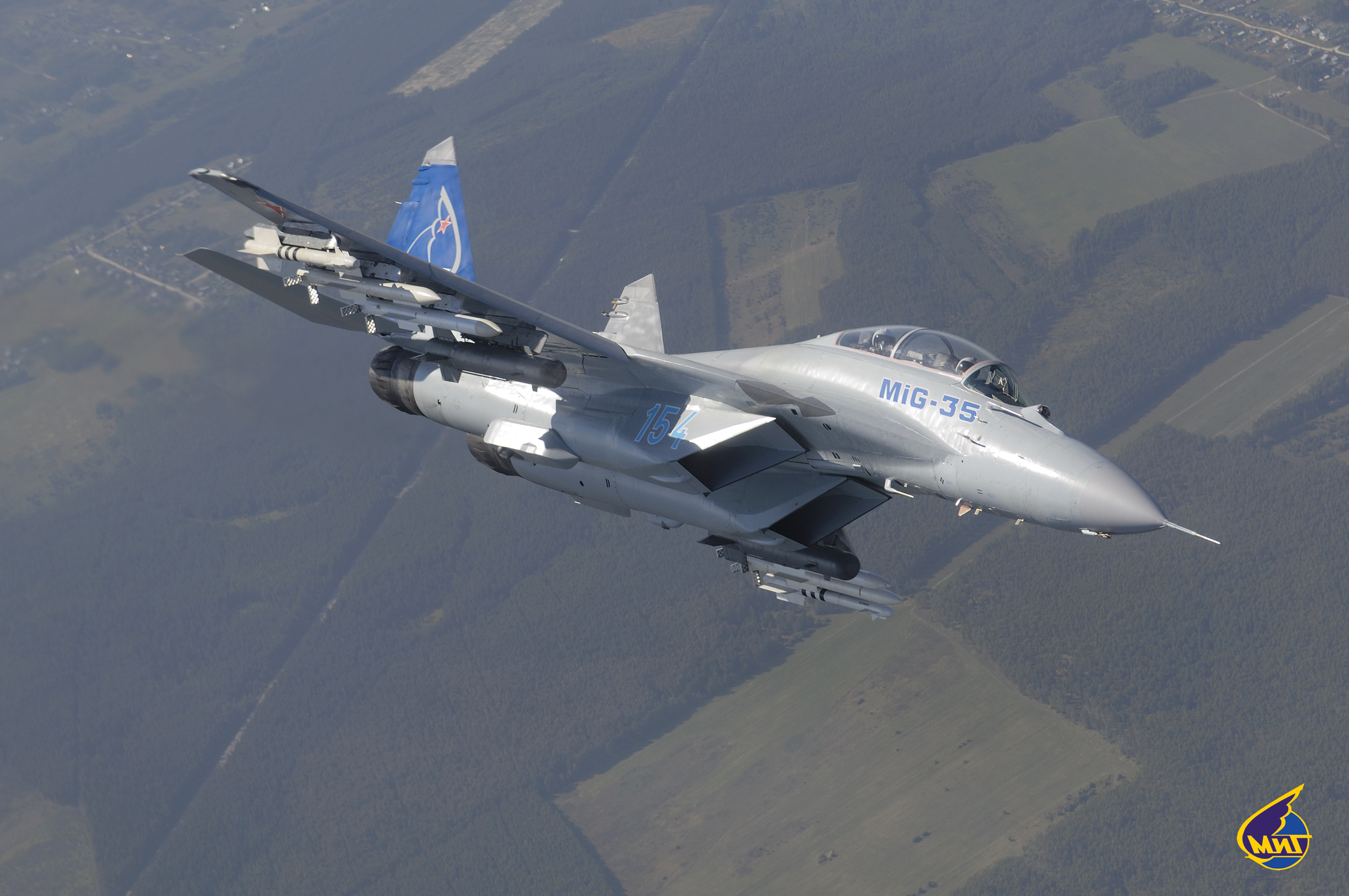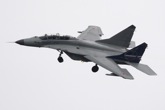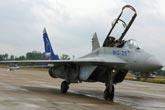MiGs try to conquer India

Mig-35.
migavia.ruRussian Aircraft Corporation MiG will offer the Indian Defence Ministry its latest MiG-35, so that it can participate in a tender to supply medium fighter jets. New Delhi is planning to announce the tender and seek expressions of interest in the near future. Earlier, in 2015, India rejected the ‘MiG 35’, opting for the French Rafale. The Indian Air Force is now organizing the tender, and planning to replace its 200 MiG-21 and MiG-27 airplanes.
In addition to the RAC MiG, those invited to participate in the tendering process are the Swedish company SAAB – with the Gripen NG aircraft, and the American Lockheed Martin – with the “Indian” version of the F-16. A major requirement for tender participants – is maximum localization of production of the fighter aircraft in India.
“The United Aircraft Corporation and RAC MiG will participate in the upcoming IAF tender,” Izvestia learned from the UAC. “We just need to wait for the official technical specifications from the Indian government and the invitation. After that, we will prepare and send a package of documents with our proposals to New Delhi,” the UAC representative said.
New Delhi is currently formulating the technical specifications which, in the form of an RFP (Request for Proposals), will be sent to selected companies participating in the tender. This will be the formal launch of the new tender. According to information from sources in the military and diplomatic circles, Indian representatives, as early as this summer, turned to Russia with a request to describe the possible packaging arrangement of the MiG-35, which the United Aircraft Corporation will be ready to offer in the tender.
According to the source, Russia has sent India an expanded list of equipment and weapons, which included electronic warfare stations, suspended opto-electronic sighting containers, a wide range of aircraft weapons, including air-air and air-land missiles, as well as high-precision bombs.
All members of the future tender had met between 2000 and 2015, during a similar competition for the right to supply 126 fighter jets worth $10 billion. In the course of this long tender, the MiG-35 beat the F-16IN and the Gripen NG, but lost out to the French Rafale. However, due to the high prices, India could not buy one hundred, but only 36 fighters. India did not receive the Rafale production technologies and localization of production in Indian enterprises, as promised.
Andrey Frolov, an expert, told Izvestia that the announcement of a new tender could be interpreted as the public recognition by India that the modernization problem of a rapidly aging Air Force fleet has not been solved.
“Now we are seeing a split in the year 2000 tender,” said Frolov. “The Rafale has been purchased, but the first aircraft will be delivered no earlier than 2019. India's own fighter jet, the Tejas, is apparently not ready yet. And now, in a situation of mass write-offs of the MiG-21 and MiG-27 airplanes, something needs to be done urgently with the domestic fleet.”
Frolov said the outcome of the new tender was difficult to predict. There are some difficulties with all the aircraft invited to participate in the tender. Sweden is prepared to share production technologies of the Gripen fighter, but there are not many Swedish parts in this aircraft. The main components are purchased from the United States and Europe with which they would have to negotiate for permission to localize production in a third country.
Another problem with the Gripen is that, for the production of a new fighter jet, the SAAB Company will be forced to remove parts from aircraft already with the Swedish Air Force. A scandal has recently erupted on this issue in Sweden – the essence of which was the question: does it make sense to “cannibalize” the existing fighter fleet for the production of new aircraft, or is it better to invest in the development and production of a more advanced fighter aircraft? The new aircraft from Saab is scheduled to appear in 2019 which, as in the case of the Rafale, does not solve the current problems of the Indian Air Force.
“With the American F-16 things are easier,” said Frolov. “Its production line in the USA is scheduled for closing in 2017, and Washington could, theoretically, transfer it to India.
In practice, however, Americans have never yet transferred technologies to manufacture their own weapons and military equipment to any other country. Especially since the onboard equipment of this latest version of the aircraft, the F-16 Blok 52/57, includes a radar with active electronically scanned array (AESA), which is considered as the key know-how in the design of modern fighters.
Ivan Konovalov, Head of the Centre for Strategic Trend Studies, believes the MiG-35 is the only aircraft with which the Indian military should not have any issues.
“The aircraft participated in the last tender and showed excellent results,” said Konovalov. “The MiG lost out to the French Rafale for political, rather than technical reasons. The formal reason for the choice in favour of the French aircraft was the fact that, under Indian legislation, the Indian military cannot buy weapons and military equipment from only one supplier. And at that time, Russia had already signed several major contracts to supply India with Su-30MKI fighters and naval MiG-29K/KUB planes.”
First published in Russian by Izvestia.
All rights reserved by Rossiyskaya Gazeta.
Subscribe
to our newsletter!
Get the week's best stories straight to your inbox

